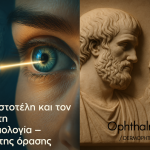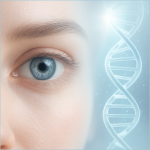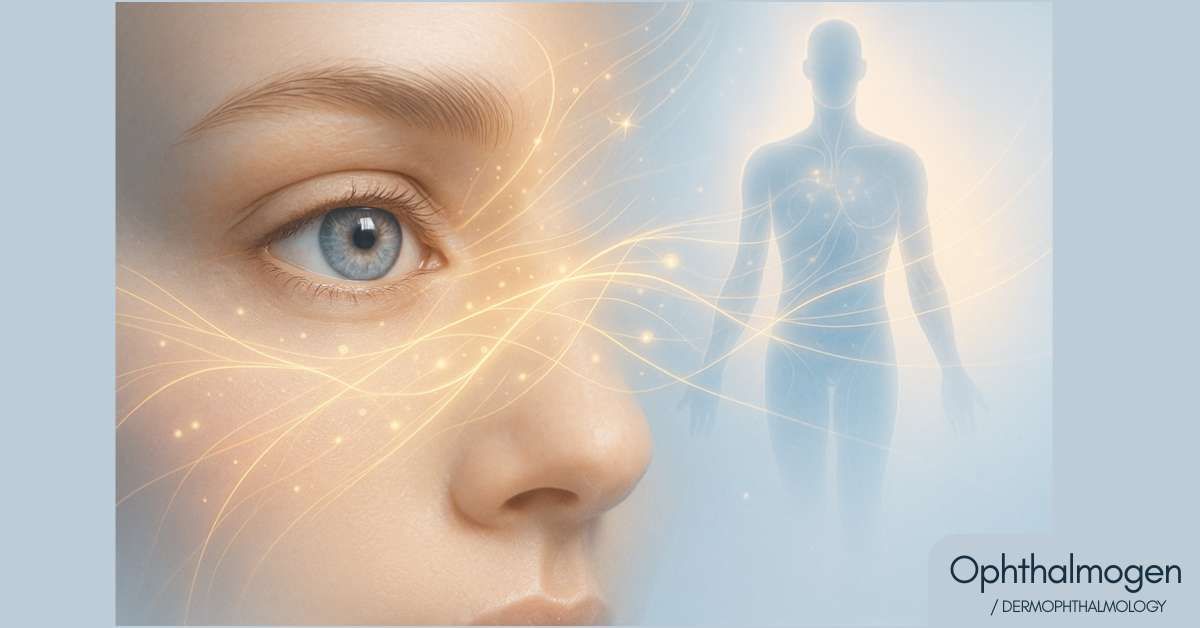
Introduction
A small chalazion on the eyelid is never just a cosmetic issue. It is a message from the body — a subtle signal that something deeper is out of balance.
Modern medicine now confirms what ancient physicians intuited: a chalazion is not a random blockage but a systemic expression of imbalance — involving the endocrine, lipidic, immune, and neuropsychological systems.
Dermophthalmology, the emerging discipline linking skin and eye health, views chalazion not as an isolated lesion but as a reflection of whole-body harmony.
🏛️ Historical Context – From Hippocrates to Molecular Medicine
In the 5th century BCE, Hippocrates observed:
“The eyes reveal the condition of the body.”
For him, inflammation around the eyelids was a manifestation of internal disharmony, a disturbance of the body’s natural humors.
Centuries later, the microbial theory of Pasteur (19th century) and the rise of molecular medicine (20th century) redefined this concept with evidence: the skin, nervous, and endocrine systems are in constant biochemical dialogue.
Today, systemic inflammation is recognized as the common ground behind both chronic disease and recurrent eyelid inflammation.
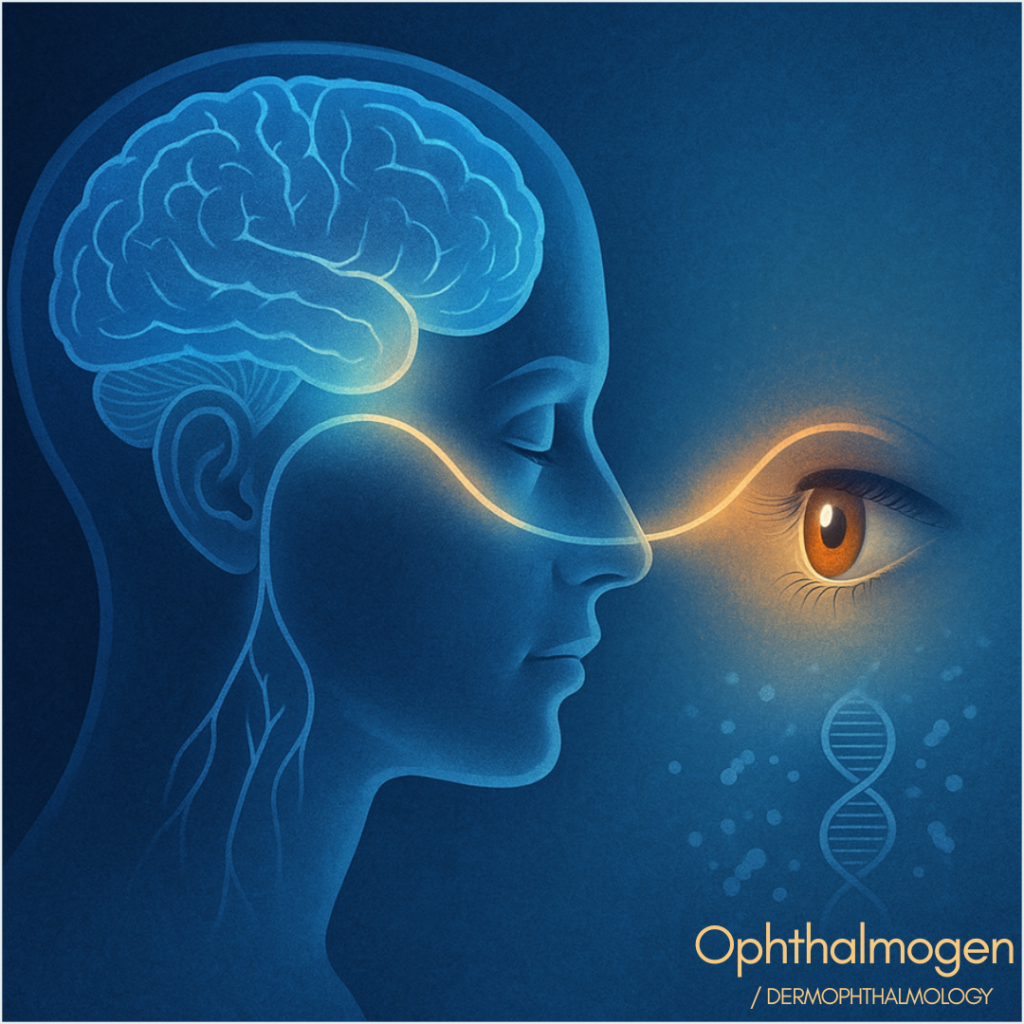
🔬 A Holistic Analysis of the Causes
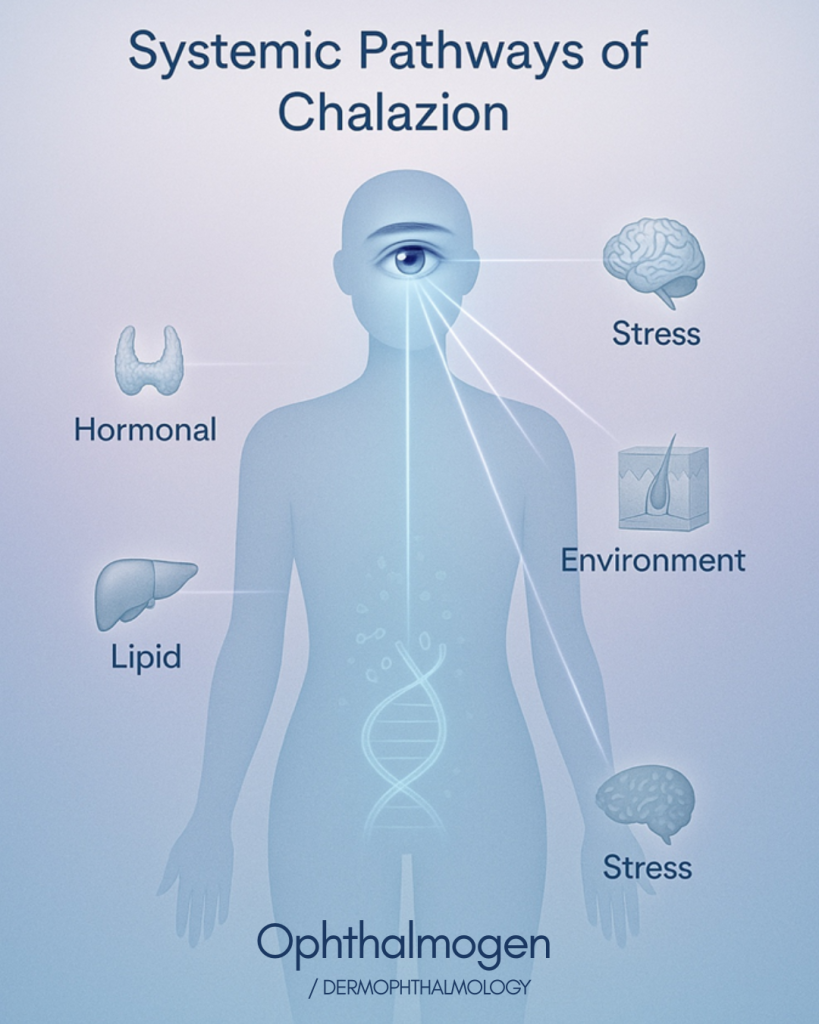
1️. Endocrine System
Hormonal changes (thyroid, cortisol, estrogen) influence sebaceous secretion and immune modulation.
Cortisol, thyroid function, and estrogen affect the flow of Meibomian glands.
– Kumaretal., IndianJOphthalmol, 2020: Hypothyroidism and reduced meibomian secretion linked to recurrent chalazia.
2️. Lipid Profile
Dyslipidemia is a proven risk factor.
– Rabensteineretal., OphthalmicRes, 2021: Elevated triglycerides associated with 2.5× higher incidence of chalazion.
– Omega-3 fatty acids improve lipid fluidity and prevent gland obstruction.
3️. Immune and Inflammatory Pathways
Increased IL-6 and TNF-α levels have been detected in chronic chalazion cases.
– Yildizetal., ExpEyeRes, 2022: Strong correlation between these cytokines and Meibomian Gland Dysfunction (MGD).
Immune hyper-reactivity results in localized glandular hyperplasia and persistent inflammation.
4️. Microbiome and Skin Barrier
Overgrowth of Demodex folliculorum and Staphylococcus epidermidis causes microbial dysbiosis that triggers inflammation.
– Liuetal., CorneaJournal, 2020: Demodex plays a key role in chronic blepharitis and recurrent chalazion.
5️. Psychosomatic and Environmental Factors
Sleep deprivation, chronic stress, and screen overexposure elevate eyelid temperature, reduce blinking, and promote lipid stagnation.
– Kawashimaetal., JOculPharmacolTher, 2018: Digital eye strain significantly impacts MGD prevalence.
Stress-induced cortisol spikes impair the immune system and slow tissue recovery.
Case Studies
Case 1 – The Hormonal Imbalance
A 42-year-old woman with hypothyroidism and perimenopausal hormonal shifts developed multiple chalazia yearly.
After thyroid stabilization,
omega-3 supplementation, and daily Dermophthalmologic care (EYE10 + Gel + Spray), recurrences dropped to zero within six months.
Case 2 – The “Screen-Driven” Inflammation
A 38-year-old male software engineer spent 10+ hours daily on screens with irregular sleep.
Developed two large chalazia within six months.
After consistent eyelid hygiene, timed breaks, hydration, and warm compresses, he remained symptom-free for one year.
Case 3 – Το σώμα που ζητούσε ηρεμία
A 55-year-old woman, medically healthy but under high emotional stress, had recurring eyelid inflammation.
After integrating Ophthalmogen care, nightly 20-minute relaxation, and structured sleep, symptoms resolved completely.
“The chalazion didn’t leave my eye — it left my mind.”
🌿 The Dermophthalmologic Therapeutic Philosophy
Dermophthalmology unites clinical science with preventive awareness.
Rather than “fighting inflammation,” it restores systemic equilibrium.
➜ Holistic Care Protocol
1️⃣ Ophthalmogen Gel → gentle cleansing, pH balance, removal of debris and bacteria
2️⃣ Ophthalmogen EYE10 → 40°C heat therapy, stimulates lipid flow and microcirculation
3️⃣ Ophthalmogen Spray (Tea Tree Oil) → rebalances microbiome, soothes inflammation
4️⃣ Lifestyle hygiene: sleep, hydration, omega-3 intake, reduced screen exposure after 10 p.m.
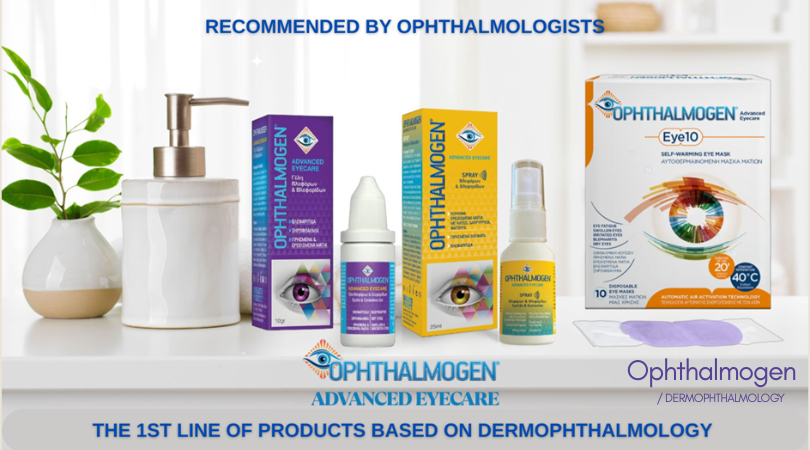
🏛️ Η Σημαντικότητα του Άρθρου
This article represents a paradigm shift in ophthalmic understanding: Chalazion is not merely an eyelid disorder — it is a mirror of systemic dysfunction.
Dermophthalmology places prevention at the center of care, encouraging patients to cultivate daily awareness and self-regulation.
As ancient Greek physicians taught:
“The body heals when the whole regains harmony.”
Philosophical Closing
Prevention is not the medicine of the future — it is the consciousness of the present.
A chalazion reminds us that everything is connected: sleep with sight, stress with sebum, thought with cell.
“True healing is not the absence of disease — but the return to balance.”
Discover the full Ophthalmogen range at www.ophthalmogen.com and Dermophthalmology at www.Dermophthalmology.com
Give your eyes the care and beauty they deserve.


